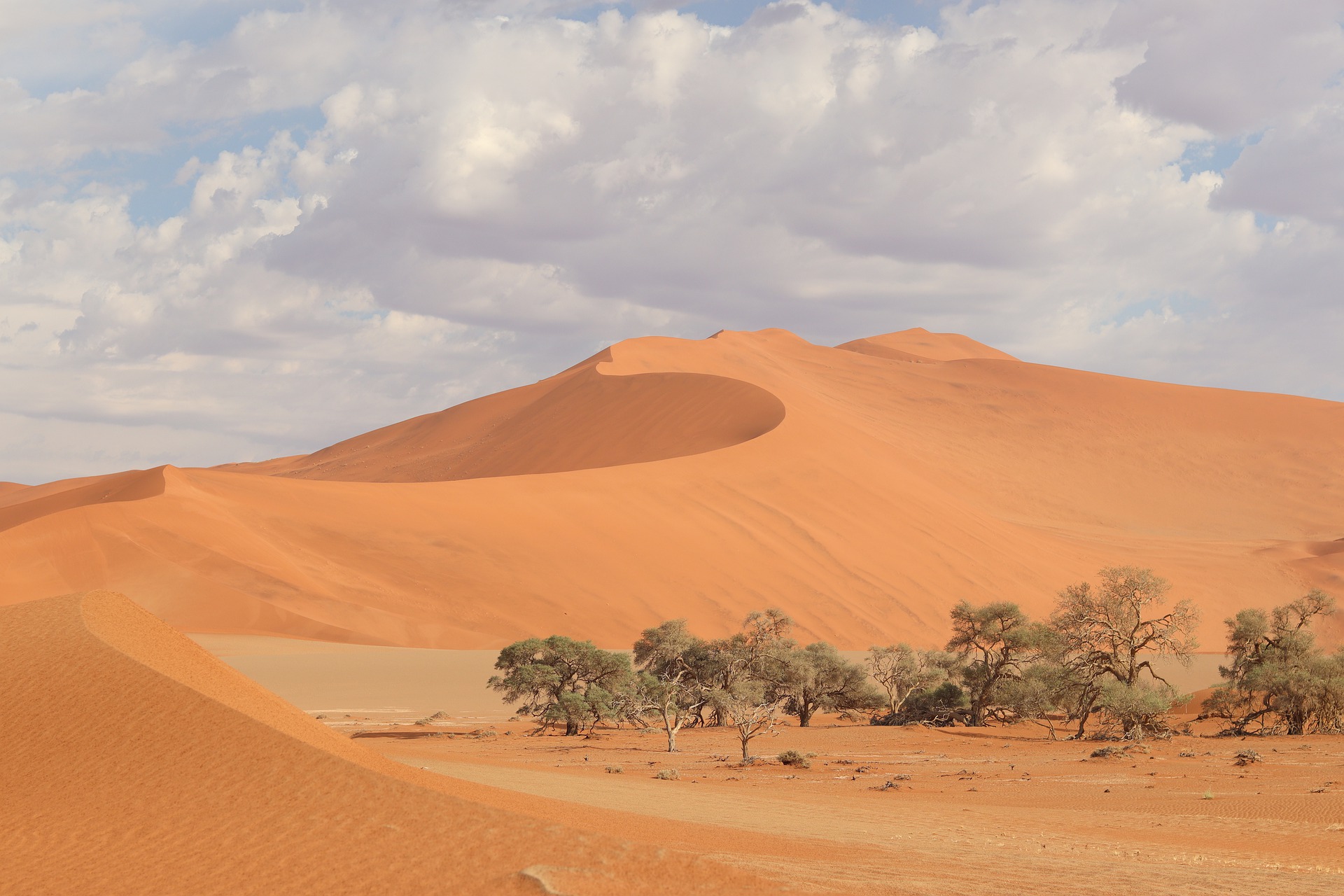Experience It: Sossusvlei, Namibia: What To Expect
Roughly translating to “dead-end marsh”, there is nothing lifeless about Sossusvlei, Namibia. Situated in the south-east of the Kalahari region, Sossusvlei showcases the desert in all its glory. This spectacular tourist attraction is the only way to truly get a taste of what Africa has to offer.
No matter what time of year you are travelling, there is always something to see here. From exploring the grassy plains to conquering the dunes, you’ll fall under the spell of this striking and dramatic landscape.
The reasons to discover this natural wonder are endless. Let’s take a look at what you can expect to see in Sossusvlei, Namibia.
What to Expect From the Sossusvlei Region
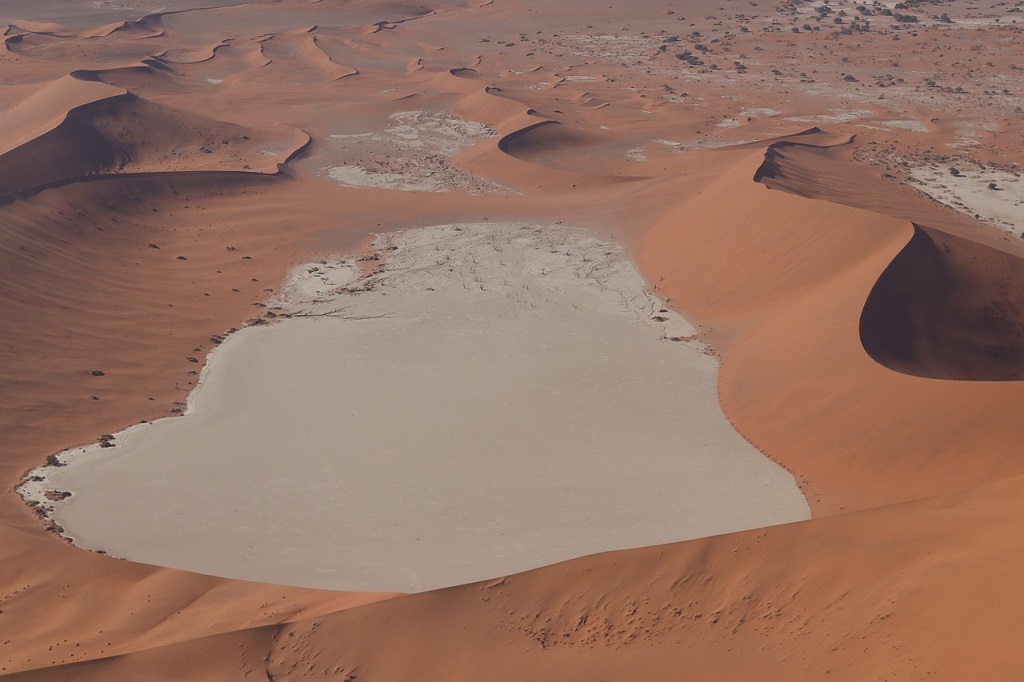
Situated in the Namib-Naukluft National Park, the Sossusvlei region embodies a large area that features two main attractions: Sossusvlei and Deadvlei. These attractions are white salt and clay pans surrounded by high red sand dunes that go on for miles.
The clay pans are not the only marvel this area has to offer. The region is known for its diversity as it’s located between the Namibian Desert and the central highland. This makes it the perfect meeting between two different kinds of ecosystems and host to some fascinating wildlife.
Sossusvlei Pans
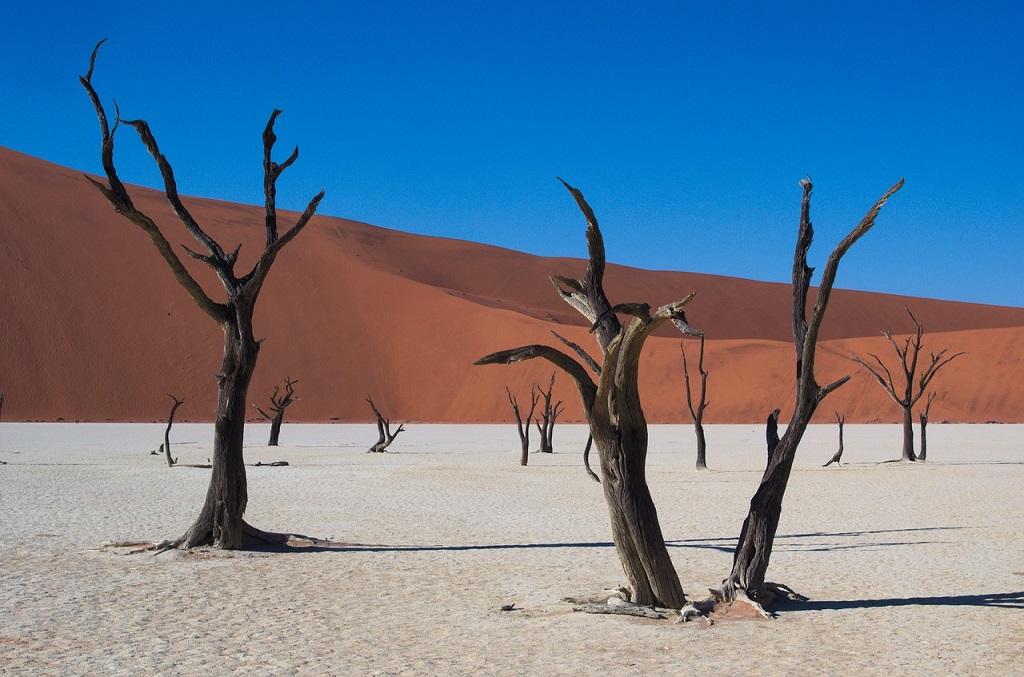
The Sossusvlei pans act as the centre of activity in the region. Most of the region’s tourist attractions and accommodations are centred around this area. Each pan has its own distinct flavour that keeps people coming back for more.
Sossusvlei Pan
The famous Sossusvlei pan owes its unusual name to the fact that it is a natural drainage basin without an outflow, an endorheic drainage basin for the Tsauchab River. This is what gives the pan a round shape. The residue of salt-rich sand left by the river leaves a slate of white on the Sossusvlei’s surface.
The attraction is postcard perfect. It’s one of the most popular destinations in the whole country because of its scenic beauty and remoteness. This pan offers travellers the chance to observe untouched, well-preserved nature at its finest.
Deadvlei Pan
Nearby to the Sossusvlei pan lies Deadvlei. Deadvlei’s name has a similar meaning to its counterpart, meaning “dead marsh”. It is the more lively of the two pans.
Deadvlei is famous for two things. Firstly, the surrounding dunes that are said to be among the tallest in the world. And secondly, the surreal picturesque landscape.
This area used to be an ending point for a river that eventually changed its course. After the drought, the area became so dry that the remaining trees couldn’t even decompose. The now dead and blackened trees stand in stark contrast to the bright white soil, a sheer delight to anyone with a photographer’s eye.
Sossusvlei Dunes
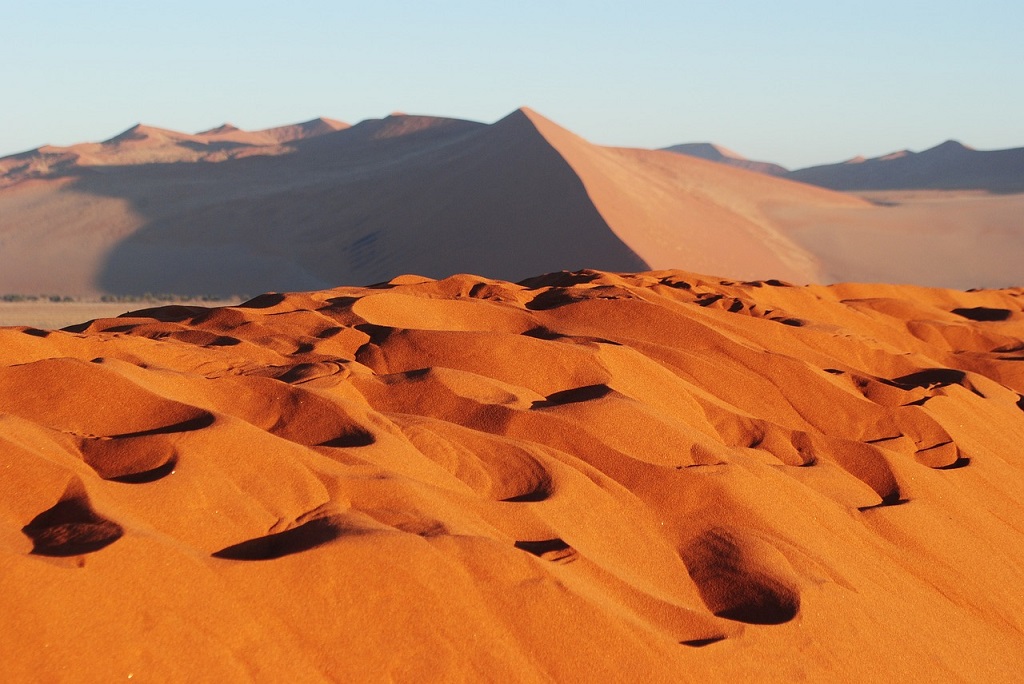
The Sossusvlei dunes in Namibia are something you’ll want to tell your grandchildren about. The dunes were created as a result of sand being carried by the wind from the coast, over a period of many years. For so long in fact, that in certain areas the sand is around five million years old!
These landmarks are referred to as “star dunes”. The wind blows the sand in different directions leaving a star-like shape with multiple arms. The sand itself is coated with a thin layer of iron oxide, which gives the dunes their striking, vibrant red colour.
While all the Sossusvlei dunes are remarkable, a few stand out from the rest. They steal the show when it comes to tourist attractions, especially for the more active traveller.
Big Daddy
One of the taller dunes, Big Daddy, stands at a towering 1 066 foot (325 m).
While it is the tallest of the Sossusvlei dunes, Big Daddy is not the tallest dune overall. That title is given to Dune 7, which stands a staggering 1 257 foot (383 m) high.
That said, climbing Big Daddy can give any tourist some serious bragging rights. Not to mention an incredible view of Deadvlei from the top.
Dune 45
More popular and arguably more photogenic is Dune 45. It’s named for being approximately 45 kilometres (28 mi) from Sesriem Gate. Visitors are more likely to visit Dune 45 as it’s considerably smaller than Big Daddy and a far easier climb at 262 foot (80 m).
The climb is also popular for the view. If you visit early enough in the morning, you could catch a glimpse of the sunrise over the top of the vlei.
Sossusvlei Flora and Fauna
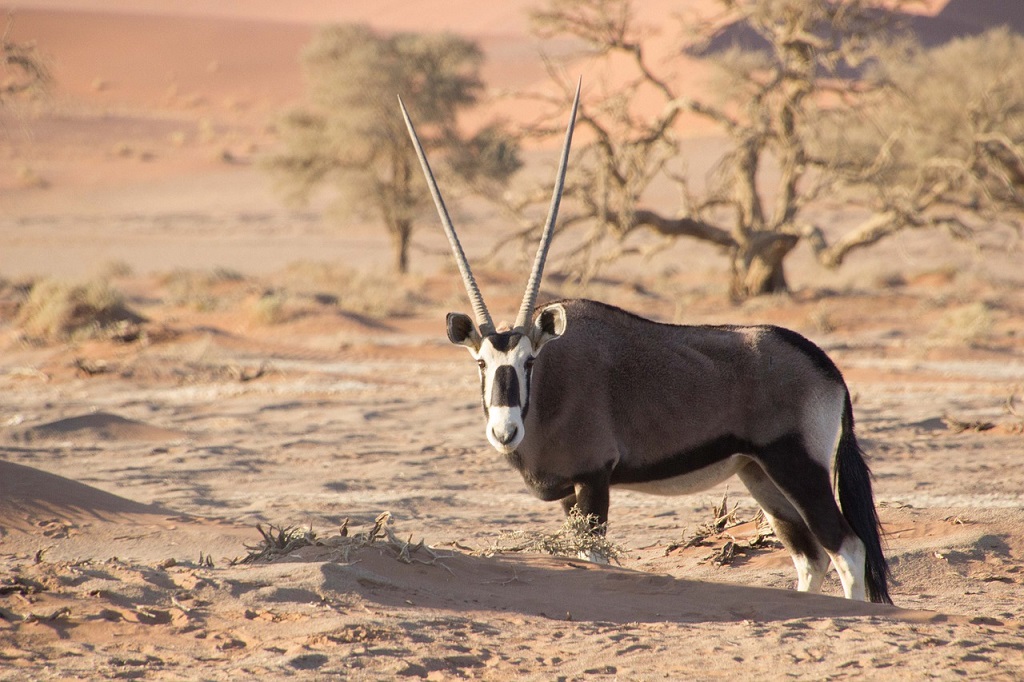
The oryx antelope, for example, has developed a unique system to cool down its blood. Other large mammals can also be spotted in the area, like ostrich, different species of buck, and hyenas.
Smaller animals appear in the cool night air, such as foxes and porcupines. Living underneath the surface are spiders, beetles, and reptiles that are able to extract water from the sand as they move through it.
Unlike the moistureless trees at Deadvlei, some plants have found ways to flourish in Sossusvlei. Camel thorn trees tap into water reserves as far as 197 foot (60 m) below the earth’s surface.
Nara melons sustain the animals in the area by providing them with fluid and nutrients. The animals, in turn, ensure the plant’s survival by spreading the melon seeds in their droppings.
Final Thoughts on Sossusvlei, Namibia
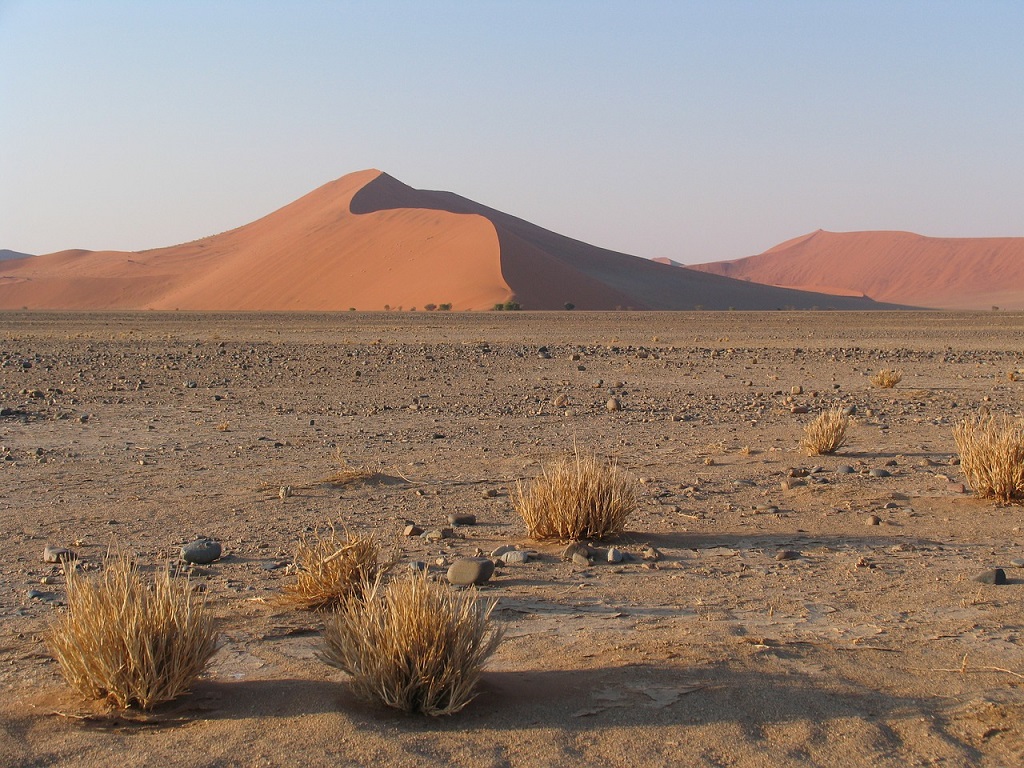
From climbing Dune 45 and Big Daddy to experiencing the beautiful pans, Sossusvlei is definitely one for your bucket list!
